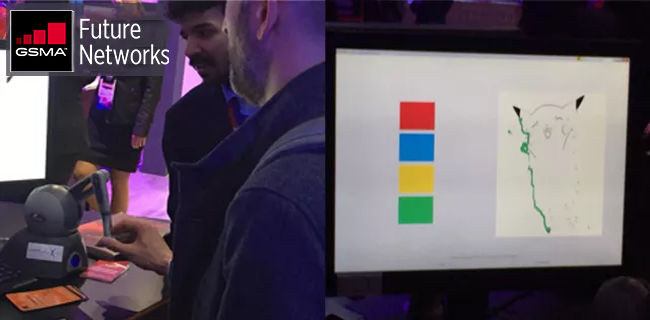Researchers from King’s College London (KCL) are demonstrating how 5G network slicing will allow numerous vertical market applications to co-exist on the same band-width.
KCL has developed a 5G robotic handwriting arm to demonstrate how a slice can have its own network characteristics such as throughput or latency. Visitors will be able to guide the arm to create simple line drawings and join the dots. This demo illustrates the differ-ence between missing latency targets and getting latency right.
“It’s a simple demonstration that 5G can achieve something very complex, such as man-aging tactile experiences remotely,” KCL senior lecturer Nishanth Santry explains. Robotic arms such as this might be used in telemedicine or fixing oil rigs, where the stakes are higher than producing legible script.
5G network slicing to create new applications
KCL will be discussing how a variety of services can be apportioned from their own slice of a 5G network and run simultaneously, without adversely affecting each other. Among the services sharing the same 5G network could be a rich and complex Internet of Things ecosystem, a rich multimedia broadcast, a Pokemon Go-style cloud game, a telesurgery practice and an entertainment service such as Netflix.
Telecoms academic Santry, who is outlining KCL’s research, aims to explain the full spec-trum of technical concerns that curious visitors may have.
“People want to know how different services can be apportioned and need reassurance that they will be mutually exclusive,” explains Santry.
The fluidity of 5G networks, and the difference between theory and practice, is another eagerly anticipated outcome from this demo. According to the GSMA’s The 5G Era re-port, the mobile industry is collectively on the cusp of delivering 5G networks, by which they aim to deliver 1Gbps speed and latency of less than 10 milliseconds.
The liquidity and shape shifting of a modern virtual network like 5G creates a supporting environment for cloud games on the move, according to Santry: “It’s about moving re-sources to the places they are needed.”
See the robot arm in action at the GSMA Innovation city in Hall 4.
